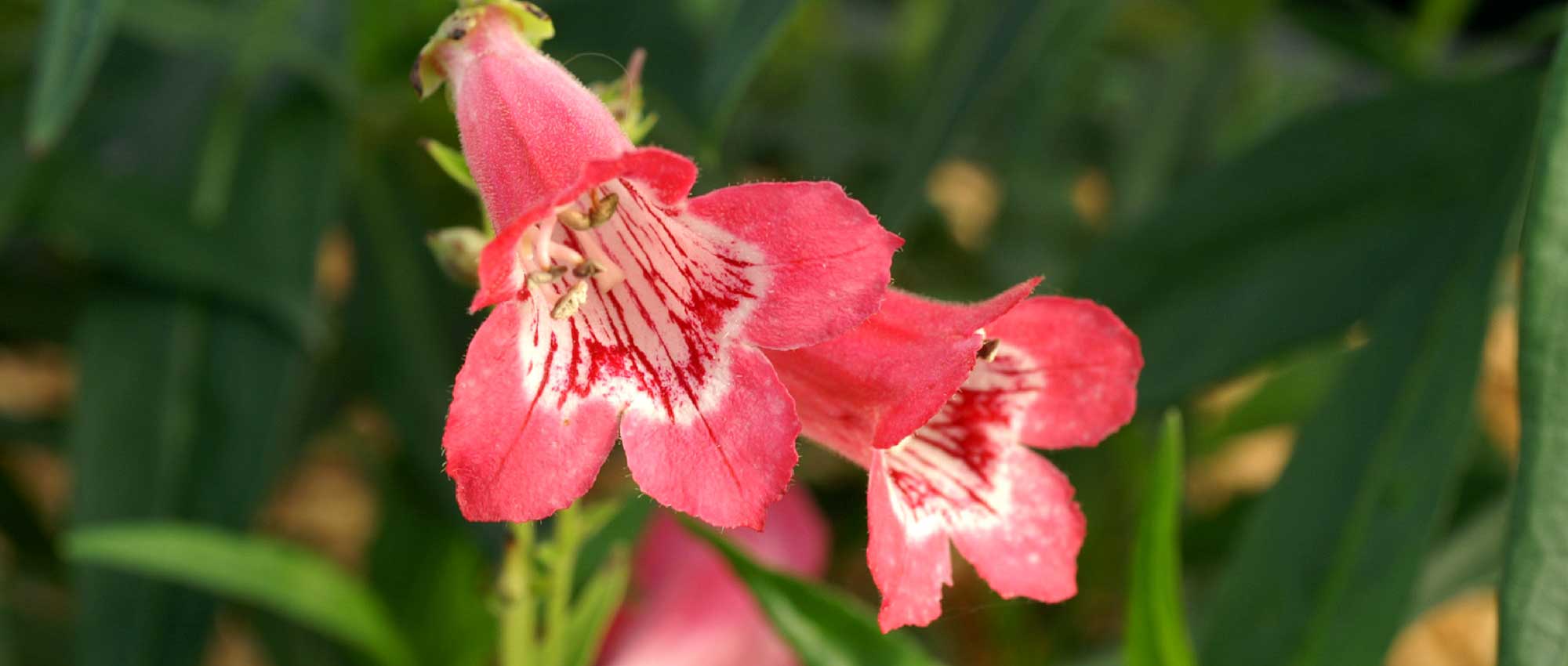
Penstemon: planting, pruning and care
Contents
Penstemons in a nutshell
- Penstemons offer a truly abundant and long-lasting flowering!
- The flowers take on beautiful, vibrant colours, often in shades of red, pink, blue, or purple…
- They have a lot of charm, with a very natural and light habit
- They thrive in full sun and well-drained soil
- They tolerate drought quite well
A word from our Expert
Penstemons offer abundant and long-lasting flowering, available in beautiful, often vibrant shades. Most of them bloom from May until the first frosts. They are appreciated for their relatively light and airy flowering, which adds verticality and a rustic, natural feel to borders. These are plants that deserve to be better known and more widely used in gardens. Most varieties produce flowers in shades of purple, pink, or red, although they can also be blue or white. The throat of penstemons is usually a lighter shade, creating stunning contrast and nuances. Discover Penstemons barbatus (notably the variety ‘Coccineus’, with its bright red hue), ‘Garnet’, or hartwegii, featuring large red and white flowers. You can pick penstemon flowers to make bouquets! They hold up quite well in a vase.
Penstemons need to be planted in full sun and well-draining soil, but they will produce more abundant flowering if the soil remains cool in summer. They are fairly drought-resistant plants that tolerate poor soils quite well. Their biggest concern is excess moisture in winter. Penstemons find their place in borders, at the edge of beds, or in rockeries. As for maintenance, they mainly need to be pruned at the beginning of spring. It is also advisable to cut back spent stems during summer… their flowering will be even more generous!
Botany
Botanical data
- Latin name Penstemon sp.
- Family Plantaginaceae
- Common name Penstemon, galane
- Flowering between May and October
- Height often between 40 and 80 cm, sometimes more
- Exposure full sun or partial shade
- Soil type well-drained, light
- Hardiness variable, generally between -5 and -15 °C
The Penstemons, also known as galanes, are perennial plants that offer a long, colourful flowering period. In the wild, they are found in North and Central America, mainly in the western United States and Mexico, but also in Canada and Guatemala. They often grow in mountainous areas, but also in plains. There are between 250 and 300 species. They have been hybridised in Europe since the early 19th century (mainly in England and Germany), giving rise to many varieties.
Penstemons were formerly classified in the Scrophulariaceae family, alongside Verbascum (mulleins) and Buddleias; however, they have recently been reclassified into the Plantaginaceae family, the family of plantains, like snapdragons, foxgloves, or veronicas. Their flowering is reminiscent of that of foxgloves.
The name Penstemon is derived from the Greek Penta: five, and stemon: stamens, referring to the fifth sterile stamen (the other four being fertile), one of the characteristics of penstemons.
The penstemon is a fast-growing plant. Most varieties measure between 40 and 80 cm in height. However, Penstemon barbatus can exceed one metre in height, while some are much shorter: Penstemon cardwellii, Penstemon menziesii, and Penstemon rupicola do not exceed 20 cm. In nature, the largest species can reach three metres, while the smallest may only be ten centimetres tall!
Although the penstemon often has straight, upright stems, there are also small creeping penstemons with a spreading habit, such as Penstemon menziesii. Penstemons can also have a bushy form, and the base of their stems is sometimes woody. It is not uncommon for the stems to take on a rather dark hue, red or purplish. This is often the case with Penstemon digitalis, which creates a beautiful contrast with the white flowering. The stems can be slightly hairy, as seen in Penstemon pallidus or hirsutus.
Penstemons have the advantage of offering a long flowering period! They are generally in bloom from May-June until the first frosts. Pruning penstemons can delay flowering, but often makes it more generous and longer-lasting.
At flowering time, the penstemon bears long upright stems, where flowers are gathered in panicles or terminal clusters. These come in shades of blue, violet, pink, and red, ranging to very dark burgundy, sometimes purple. They can be solid or bicoloured. It is common for them to be shaded by a white throat, either in a gradual manner or by a clear line. The throat may bear fine markings, as seen in the variety ‘Souvenir d’Adrien Régnier’. The contrasts and nuances are often stunning! The flowers can also be entirely white. Much rarer, some penstemons with yellow flowers can be found (like ‘Mersea Yellow’).

The flowering of penstemons! From left to right, the varieties ‘Le Phare’, ‘Hewell Pink Bedder’, and ‘Sour Grapes’ (photo Eric Hunt)
The flowers are tubular or elongated bell-shaped. They can measure between 2 and 7 cm in length and are more or less slender depending on the species. Thus, Penstemon barbatus has slender, elongated flowers that are not very open, unlike other varieties such as ‘Gloire des Quatre rues’. The flowers consist of five fused petals that open into two lips. The upper lip ends in two lobes, and the lower lip in three lobes. The flowers of Penstemon mensarum have a slightly different shape from other species, with the lobes of the lower lip being much more pronounced. Inside the tube of the corolla, there are five stamens, four of which are fertile and one sterile.
The flowers of penstemons resemble those of foxgloves, and when they form small bells, they can also remind one of campanulas. The varieties with large flowers (like ‘Gloire des quatre rues’) have a very “horticultural” appearance. They are perfect for adding a lot of colour to borders and mixed beds, in association with other perennials, but can have an “artificial” side. Those with small flowers, and botanical penstemons in general, have a more natural and spontaneous appearance. They are more likely to be integrated into cottage or naturalistic gardens.
The flowers are rich in nectar and attract pollinators. In nature, penstemons are pollinated by bees and hummingbirds.
The leaves of penstemons are entire, not divided. They can be oval or lanceolate, but often have an elongated, fairly narrow shape. Those of Penstemon schoenholzeri have a beautiful linear, fine, light shape… but the finest are those of Penstemon pinifolius, as they resemble pine needles! The leaves measure between 4 and 12 cm in length, and can even exceptionally reach 20 cm long. Those of Penstemon barbatus and Penstemon digitalis are quite large, exceeding 10 cm in length. The leaves can be attached to the stem by a petiole or be sessile (directly attached to the stem by the lamina). They are opposite, meaning arranged opposite each other on the stems, or whorled (at least three leaves inserted at the same level).
The leaves are generally green, but can also take on purplish or reddish hues. Thus, the young leaves of Penstemon digitalis ‘Husker’s Red’ have a very dark purplish colour. Penstemon ‘Dark Towers’ has even darker foliage, almost black. In Penstemon grandiflorus, the leaves are grey-blue, with a thick, almost succulent texture.
Depending on the varieties and the climate in which you grow them, the leaves of Penstemons can be deciduous, evergreen, or semi-evergreen.

The foliage of Penstemon schoenholzeri, and the leaves and stems of Penstemon hirsutus (photo Salicyna)
In autumn, after flowering, the penstemon forms fruits (capsules) that are ovoid, dry, turn brown, and open at maturity to release many small seeds.
Penstemons are perennial plants, but they can be grown as annuals in the coldest regions. Their hardiness often varies between -5 and -15 °C. It depends on the variety you have chosen, but also on the drainage of the soil. Plants will be more sensitive to cold in waterlogged soil in winter, which is why it is important to grow penstemons in suitable ground or improve drainage when planting. Similarly, adding a layer of mulch will help protect the plants.
Penstemons are plants that do not live very long. Generally, they start to become less vigorous after four years of cultivation. It is then time to renew the clumps. You can do this by propagating them through cuttings.
 The capsules of Penstemon pinifolius (photo Salicyna), and the seeds of Penstemon digitalis
The capsules of Penstemon pinifolius (photo Salicyna), and the seeds of Penstemon digitalis
The main varieties of penstemons
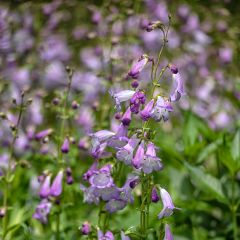
Penstemon Alice Hindley - Beardtongue
- Flowering time July to November
- Height at maturity 75 cm
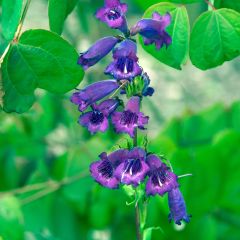
Penstemon Midnight - Beardtongue
- Flowering time August to October
- Height at maturity 60 cm

Penstemon hybrida Gloire de Quatre Rue - Beardtongue
- Flowering time July to October
- Height at maturity 60 cm
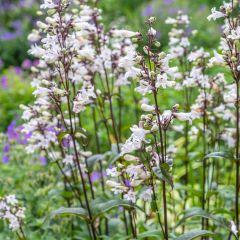
Penstemon digitalis Husker Red - Foxglove beardtongue
- Flowering time July, August
- Height at maturity 65 cm
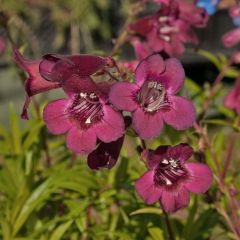
Penstemon Blackbird - Beardtongue
- Flowering time July to November
- Height at maturity 65 cm
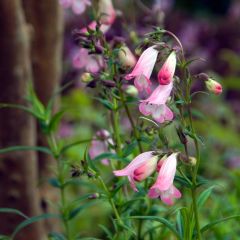
Penstemon Apple Blossom - Beardtongue
- Flowering time August to November
- Height at maturity 70 cm
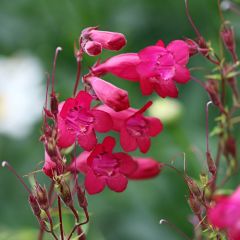
Penstemon campanulatus Garnet - Beardtongue
- Flowering time August, September
- Height at maturity 1 m
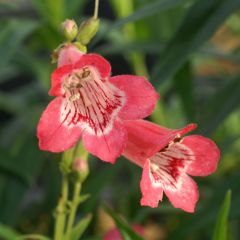
Penstemon heterophyllus Souvenir dAdrien Régnier - Beardtongue
- Flowering time July to November
- Height at maturity 50 cm
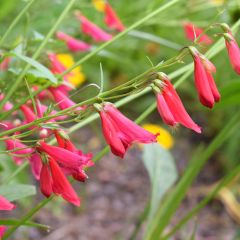
Penstemon barbatus Coccineus - Beardtongue
- Flowering time August to October
- Height at maturity 1 m
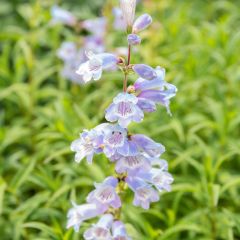
Penstemon Sour Grapes - Beardtongue
- Flowering time August to December
- Height at maturity 50 cm
Discover other Penstemon
View all →Available in 1 sizes
Available in 1 sizes
Available in 2 sizes
Available in 1 sizes
Available in 1 sizes
Available in 1 sizes
Available in 2 sizes
Available in 2 sizes
Available in 1 sizes
Available in 1 sizes
Planting
Where to plant?
Plant penstemons preferably in full sun, or possibly in partial shade. Full sun is ideal, especially if you live in the north of France. In the south, you can settle for a slightly shaded position, as penstemons are sensitive to scorching sun. Also, place them sheltered from cold winds.
Install your penstemons in well-draining, light soil, as they do not like soils that remain waterlogged in winter. If your soil is clayey, you will need to add pumice or gravel to improve drainage. You can also plant on a mound to elevate the plant and prevent water from pooling. Soil that is too heavy, which retains water, could cause the roots of the plant to rot.
Penstemons thrive in fertile soil, rich in humus. We suggest adding some compost in spring. Rock garden or bush varieties require less organic matter; they can manage with poor, stony soil.
Some varieties (especially the smaller, creeping types) can be planted in rock gardens, in dry gardens, or on stone walls. They tolerate drought and poor, low-fertility soils very well. You can grow Penstemon cardwellii, Penstemon hirsutus var. pygmaeus, or Penstemon pinifolius in this way.
If the location suits them and the conditions are right, the penstemon will be more resilient and require much less maintenance. Its two biggest fears are cold and excess moisture. By placing it in well-draining soil and sheltered from the wind, it will be a bit hardier.
Penstemons do not appreciate root competition from other plants. It is better not to place them right next to bushes, trees, or particularly vigorous plants.
They can also be planted in pots. This is an interesting alternative for less hardy varieties, which you can bring indoors for winter protection.
When to plant?
The best time to plant penstemon in the garden is spring, in April-May, but it is also possible to do so in autumn if you live in a region with a mild climate.
How to plant?
Plant penstemons in groups to create a beautiful mass effect, installing at least three or five plants together. Maintain a distance of 30 to 40 cm between each, a little less for the more compact varieties.
- Soak the root ball in a basin filled with water for 10-15 minutes.
- In the meantime, dig a hole two to three times the size of the root ball.
- Loosen the bottom of the planting hole and add drainage materials. Also, add some well-decomposed compost, which you will mix with the soil.
- Place the root ball in the planting hole and replace the soil all around it.
- Water generously.
- Place a layer of mulch at the base of your penstemons.
Water regularly, at least once a week, during the first year. You can then reduce watering.
Also, check out our video tips – How to plant perennials?
Penstemons adapt quite well to pot or container cultivation. Place a layer of drainage at the bottom, then add potting soil, install the plant, and water. Learn more in our advice sheet Growing Penstemons in pots.
Read also
Foxgloves: sowing, planting and careCare
Penstemons generally require very little maintenance. Water occasionally in the months following planting, while the plant establishes itself. If you are growing them in pots, you will need to water a bit more frequently, as the substrate dries out quickly. Although these are plants that are quite drought-resistant, it is better to keep the soil cool in summer, so they continue to provide abundant flowering. However, be careful of excess water, which could cause the roots to rot. To keep the soil cool for longer, you can apply a mulch, which will also prevent the growth of weeds. In any case, we advise adding a thick layer of mulch in late autumn to protect the plant from the cold.
It may happen that the stems bend under the weight of the flowers. To avoid this problem, you can prune them for a more compact and ramified habit, install staking, or tuck them between plants with a rigid habit, against a wall or other elements that will hold them up.
It is best to add some well-decomposed compost in spring. Place it at the base of the plant and lightly scratch it into the soil. You can also apply an organic fertiliser (ground horn, dried blood, guano…).
Penstemons are short-lived plants; they generally become less vigorous after four years in the garden. It is better to renew them every three to four years. Their short lifespan is compensated by the fact that they root very easily! You can also divide the clumps in spring.
We advise you to prune the penstemons, to maintain vigorous, bushy, and floriferous plants. This encourages the plant to branch out and produce new shoots, while extending its lifespan. Do not do this in autumn, as the old stems and leaves protect the clump from the cold, but rather wait until early spring to intervene, when the first shoots begin to appear. You can cut back severely (to 5-10 cm from the stump) the most vigorous varieties, and trim to 20-30 cm for the others. The plant will soon produce new shoots. In mid-summer, cut the faded flower stems, to encourage the emergence of new flowers.
Overall, penstemons are not very susceptible to diseases. However, they can be affected by powdery mildew, a fungal disease characterised by the appearance of a white fluff on the leaves. We advise treating by spraying sulphur. You can also use a garlic infusion or horsetail manure. Be careful of slugs and snails that nibble on the young shoots. You can protect your plants by placing ash or wood chips all around, to prevent them from getting close. The penstemon can also be attacked by nematodes.
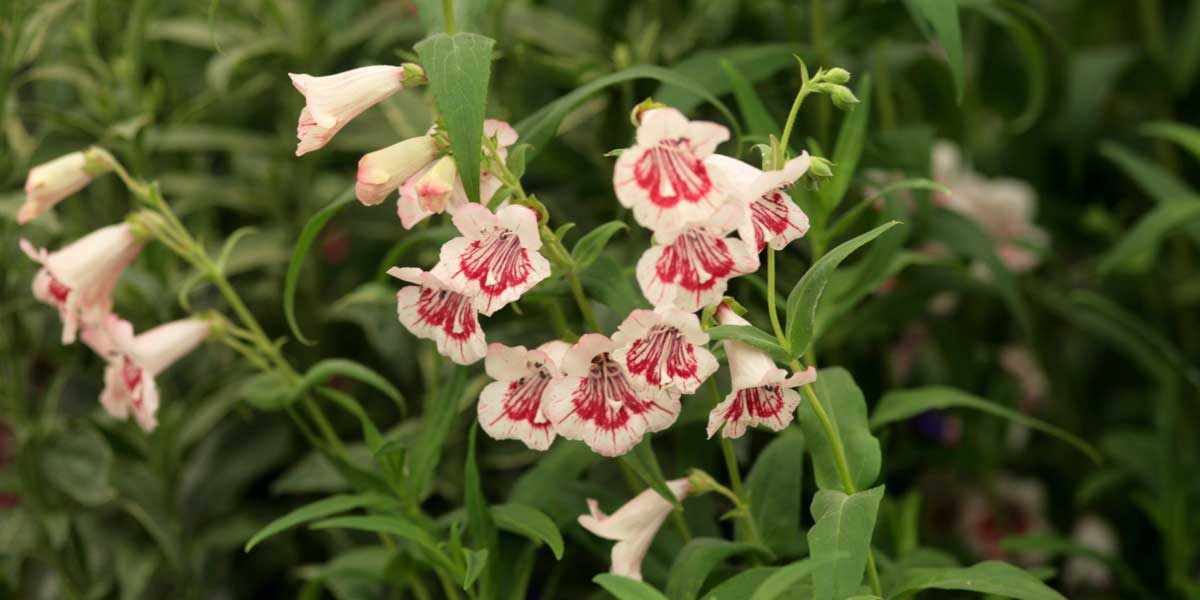
Multiplication: propagation by cuttings, division and sowing
As penstemons are not always very hardy, regularly propagating them allows you to maintain your varieties and replant them if they do not survive the winter. Propagation by cuttings is the best technique for this. You can also divide them or sow seeds, and some semi-woody species can be layered.
Propagation by Cuttings
Propagation by cuttings is the simplest and most reliable technique for multiplying penstemons. Do this in summer, around August.
- Take a section about ten centimetres long from a flowerless stem. Cut cleanly just below a node (the point where leaves attach to the stem).
- Remove the leaves at the bottom of the stem, leaving only two or three leaves at the top.
- Fill a pot with a mixture of potting soil and sand, possibly with some vermiculite, then water it to moisten.
- Dip the base of the stem in plant hormone.
- Make a hole in the substrate, for example using a pencil or a small stick.
- Place the cutting in the hole.
- Firm the soil around it to ensure good contact between the cutting and the substrate.
- Place the pot in a sheltered location with bright light, but out of direct sunlight.
The substrate should not dry out until the cutting has developed roots. You can plant the young plants in the garden the following spring.
Division
Over the years, penstemons, particularly creeping varieties, can become less bushy and tend to exhaust themselves, flowering less and less. It is then preferable to divide them to rejuvenate the clumps. Do this in spring, in April. Some species divide more easily than others. If your plant is not suitable, it is better to propagate it by cuttings.
Identify a well-sized clump and check if all the roots come from the same place, or if the plant separates into several rosettes: in this case, division will be quite easy. Dig up the clump, then separate it into several fragments, each with at least one rosette of leaves and roots. Replant the fragments immediately in another location or in pots. Water generously.
Continue to water regularly.
Sowing
Sowing Penstemon is more delicate and takes longer than propagation by cuttings. For some species, seeds can take a long time, several months or even years, to germinate. Reserve sowing for botanical species. The best time is between late winter and early spring, around March.
In general, Penstemon seeds germinate better after being stored dry for at least six months. Additionally, some species require stratification before sowing. For this, place them in moist sand, which you will keep in the refrigerator (or outside in winter) for a few weeks.
- Without stratification, you can fill a pot with potting soil mixed with sand, then sow the seeds and cover them. Use sifted potting soil.
- If you have stratified them, take them out of the refrigerator as soon as they start to germinate, then replant them in pots filled with substrate.
- Water.
- Place the pots under a frame in a bright location.
You can plant them in the garden in early summer, around June.
Pairing Penstemons in the garden
Penstemons and their vibrant hues are perfect for bringing vitality to the garden. They pair wonderfully with other summer-flowering perennials… Take the opportunity to create colourful borders or mixed beds! You can plant them alongside yarrow, hardy geraniums… and with the colourful blooms of asters and Echinacea purpurea, for a garden in bloom until autumn! You can also combine penstemon with agastache, which flowers for a long time and has similar growing conditions. And for a delicate and romantic atmosphere, don’t hesitate to plant penstemons alongside some roses; their flowering colours will harmonise beautifully.
Penstemons pair very well with ornamental grasses, such as Pennisetums or Stipa tenuifolia. These are also plants that enjoy the sun and tolerate drought well. Use them together to create a rustic, wild-style garden, giving your borders a meadow-like appearance! Create an apparent disorder where the stems intertwine, a bed with a spontaneous, lively, free look! Insert among the penstemons and grasses some colourful flowers, such as Gaura lindheimeri, knautia (Knautia arvensis), or Sanguisorbes – particularly Sanguisorba minor, which tolerates drought quite well. Also enjoy cosmos and their light and abundant flowering!
Penstemons easily find their place in a dry garden or a scree garden. Again, integrate some clumps of grasses, as well as tansies, wormwoods, Buenos Aires verbena, Carpathian bellflowers (Campanula carpatica) or Centranthus ruber. The smaller penstemon varieties, especially those with a creeping habit, will fit well in rockeries or on walls, alongside sedums, houseleeks, Campanula muralis or Phlox paniculata.
→ Discover more association ideas with Penstemons in our advice sheet!

Integrate penstemons into a bed with other light and colourful blooms! Association with Sanguisorba ‘Red Tip’, Pennisetum and Epilobium album /Penstemon ‘Gloire des Quatre Rues’ / Pennisetum setaceum ‘Rubrum’ / Achillea ‘Terracotta’
Useful resources
-
- Discover our range of penstemons!
- Find out how to choose a Penstemon
- Video – Francis Peeters talks about Penstemon ‘Blackbird’
- A blog about penstemons
- The site of the American Penstemon Society, with plenty of information regarding cultivation
- Discover our 7 pairing ideas to create beautiful summer planters
- Our advice sheets: 5 Penstemons with purple or mauve flowers, 5 penstemons with red flowers
Frequently asked questions
-
My penstemon is flowering less and less; it seems to be exhausting itself... What should I do?
It is advisable to prune penstemons at the end of winter, as this encourages the emergence of new shoots and revitalises the plant. Pruning may delay flowering, but it makes it more abundant. Similarly, in summer, prune the faded stems so that the plant produces new flowers. You can also divide it. Penstemons are short-lived perennial plants: we recommend renewing the young plants on average every four years.
-
I live in an area with a harsh climate... What can I do to ensure my penstemon survives the winter?
Start by choosing the hardiest varieties. Add a good layer of mulch in autumn, which will protect it from the cold. Place it in a sheltered spot, on perfectly drained soil. It is very important that the soil is not waterlogged in winter. And take cuttings to preserve the variety in case you lose it! You can also grow your penstemon in a pot and bring it indoors for winter protection.
- Subscribe!
- Contents































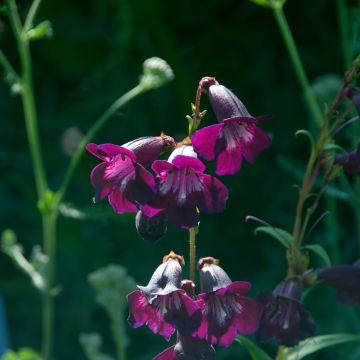



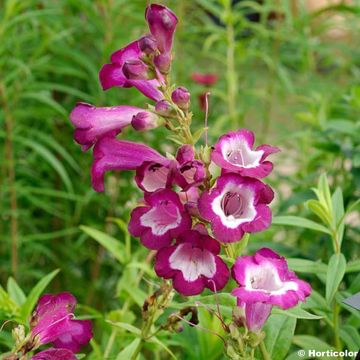

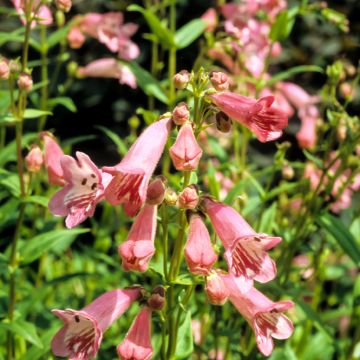
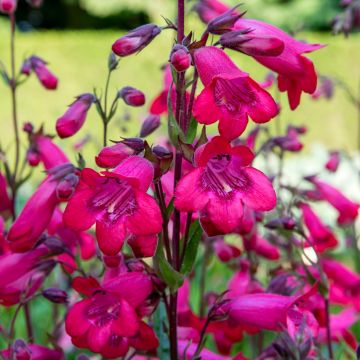
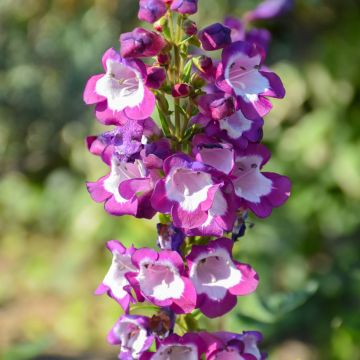
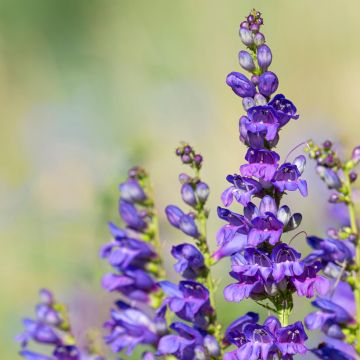
Comments